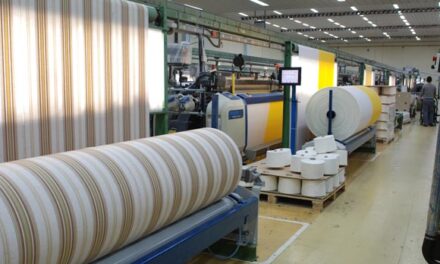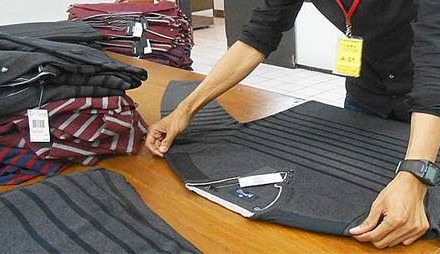 The Chemical Oxygen Demand (COD) is a measure of water and wastewater quality. The COD test is often used to monitor water treatment plant efficiency. This test is based on the fact that a strong oxidizing agent, under acidic conditions, can fully oxidize almost any organic compound to carbon dioxide. The COD is the amount of oxygen consumed to chemically oxidize organic water contaminants to inorganic end products.
The Chemical Oxygen Demand (COD) is a measure of water and wastewater quality. The COD test is often used to monitor water treatment plant efficiency. This test is based on the fact that a strong oxidizing agent, under acidic conditions, can fully oxidize almost any organic compound to carbon dioxide. The COD is the amount of oxygen consumed to chemically oxidize organic water contaminants to inorganic end products.
In environmental chemistry, the chemical oxygen demand (COD) is an indicative measure of the amount of oxygen that can be consumed by reactions in a measured solution. It is commonly expressed in mass of oxygen consumed over volume of solution which in SI units is milligrams per ltr (mg / L). A COD test can be used to easily quantify the amount of organics in water. The most common application of COD is in quantifying the amount of oxidizable pollutants found in surface water (e.g. lakes and rivers) or wastewater. COD is useful in terms of water quality by providing a metric to determine the effect an effluent will have on the receiving body, much like biochemical oxygen demand (BOD) .
The COD is often measured using a strong oxidant (e.g. potassium dichromate, potassium iodate, potassium permanganate) under acidic conditions. A known excess amount of the oxidant is added to the sample. Once oxidation is complete, the concentration of organics in the sample is calculated by measuring the amount of oxidant remaining in the solution. This is usually done by titration, using an indicator solution. COD is expressed in mg/L, which indicates the mass of oxygen consumed per liter of solution.
- For Particular Chemical: COD – 100 mg/gm means, 100mg of Oxygen is required by 1 gm of that product
- For Effluent: Cod – 100 mg/ltr means, 100mg of Oxygen is required by 1 ltr of effluent
There are different limits of COD allowed to CETPs and for discharging it to the streams. To achieve these limits, textile processors can look at the below tools.
Effluent Analysis: Process Wise Effluent Analysis
In depth studies of departmental effluent to be carried out to identify the sources of COD contributors. Following is the general effluent characteristics of typical textile mill processing Cotton woven fabrics.
| Source of effluent generation | Parameters | ||
| PH | COD (mg/L) | BOD (mg/L) | |
| Process Effluent | |||
| Desizing | 5.83-6.50 | 10000-15000 | 1700-5200 |
| Sourcing | 10-13 | 1200-1300 | 260-400 |
| Bleaching | 8.5-9.6 | 150-500 | 50-100 |
| Mercerizing | 8-10 | 100-200 | 20-50 |
| Dyeing | 7-10 | 1000-3000 | 400-1200 |
| Wash Effluent | |||
| After Bleaching | 8-9 | 50-100 | 10-20 |
| After acid rinsing | 6.5-7.6 | 120-250 | 25-50 |
| After dyeing (Hot wash) | 7.5-8.5 | 300-500 | 100-200 |
| After Dyeing (acid & soap wash) | 7.5-8.64 | 50-100 | 25-50 |
| After dyeing (Final Wash) | 7-7.8 | 25-50 | |
| Printing Washing | 8-9 | 250-450 | 115-150 |
| Blanket washing of rotary printer | 7-8 | 100-150 | 25-50 |
Following is the general effluent characteristics of typical textile mill processing Polyester-Cotton woven fabrics.
| Source | Effluent | PH | COD | BOD | TS | SS | TDS |
| Kg per 1000 kg of products | |||||||
| Desizing | |||||||
| Starch | 12.5 | 6-8 | 38.5 | 97 | 77 | 20 | |
| PVA | 12.5 | 6-8 | 2.5 | 55.4 | 5 | 50.4 | |
| CMC | 12.5 | 6-8 | 3.93 | 59.5 | 5 | 54.5 | |
| Mixture | 74 | 78 | |||||
| Sourcing | |||||||
| Unmercerised | 25 | 12 | 10.8 | 14.8 | 5 | 9.8 | |
| Mercerised | 25 | 12 | 8.34 | 14.7 | 5 | 9.7 | |
| Bleaching | |||||||
| Peroxide | 16.7 | 1.3 | 24 | 4 | 20 | ||
| Oxidative-desize-bleach | 5.1 | 23 | 184 | ||||
| Mercerising | |||||||
| Poly/cotton | 16.7 | 3.2 | 82 | 5 | 77 | ||
| Dyeing Disperse-vat | 42 | 12 | 68 | 22.8 | 122 | 122 | |
| Vat | 100 | 150 | |||||
| Disperse | 80 | 20 | |||||
| Direct disperse | 6-8 | 32 | 10.7 | 114 | |||
| Sulphur disperse | 11 | 68 | 22.8 | 69.7 | |||
| Reactive disperse | 12 | 41 | 13.8 | 192 | |||
| Printing | |||||||
| Pigment (Woven) | 6-8 | 5 | 1.26 | 0.13 | 2.5 | ||
| Pigment (Knit) | 6-8 | 5 | 1.26 | 0.13 | 2.5 | ||
| Vat (Woven) | 10 | 86 | 21.5 | 25 | 34 | ||
| Vat (knit) | 10 | 86 | 21.5 | 25 | 35 | ||
| Machine wash | 100 | ||||||
| Screen wash | 7 | ||||||
| Hose vessels | 30 | ||||||
| Pigment wash | 12.5 | 1 | 3 | 0 | 3 | ||
| Finishing | |||||||
| Resin finishing | 6-8 | 22 | |||||
| Resin finishing flat curling | 6-8 | 25 | 6.32 | 17.3 | |||
Product Analysis:
- Conning and other oils efficient removal means good pretreated fabric. But, in-turn it contributes largely to COD load of the pretreatment effluent
- Pretreatment chemicals which are used to remove oils and waxes also contribute to the increase in COD & decrease in biodegradability of the effluent
- Dyeing auxiliaries such as leveling, dispersing agents and pH buffers for Polyester dyeing have major contributions in COD. Levelling agents (Aliphatic ether) types give higher COD value whereas Aryl chemistry (Archroma: Eganal PESI) contribute very less to COD. Similarly, for dispersing agents, polyester dyers can use Aromatic sulfonates (Archroma: Lyocol RDNI Liq) which contain almost half the COD when compared to local market products
- Disperse Dyes with higher strengths are considered good for ecology as they add less COD compared to weaker strength dyes. Further, the dispersing agents used to manufacture dyes are also a great influence to high COD
- Glacial Acetic acid with COD of 1000-1500 mg/g can be replaced with lower COD acid replacements (Archroma: Sirrix IA). Dyer can realize the additional benefit of 20 percent reduction in TDS
- In polyester printing mils; loop accelerators and pH buffers are the miscreants in increasing the COD value of department effluent. Further, low dosage products (high strength) are advisable as they help in restricting the COD to lower levels
Effluent Treatments:
The laboratory experiments confirmed the high efficiency of chemically enhanced mechanical treatment towards COD. The data obtained show that evens a low dose of chemicals provides sufficient COD reduction. The initial pH of the wastewater had a significant impact on the COD removal. Under the optimal operational conditions (pH = 7.5, T = 18 °C) the treatment of wastewater from paper industries by coagulation has led to a reduction of 70 percent COD for wastewater discharged.
In terms of the investigated paper industry wastewater, polyaluminium chloride appears to be most suitable for treatment of high COD concentration. Similar studies to be encouraged for Textile effluent.
Many mills and effluent treatment plants go for Aeration fountain and Hydrogen Peroxide dosing, which are effective but can’t alone achieve optimum or standard levels.
By Mitesh Shah – Sales Head, SF Dyes &
Gopalakrishnan Nellaiappan – Regional Manager, SF Dyes

















